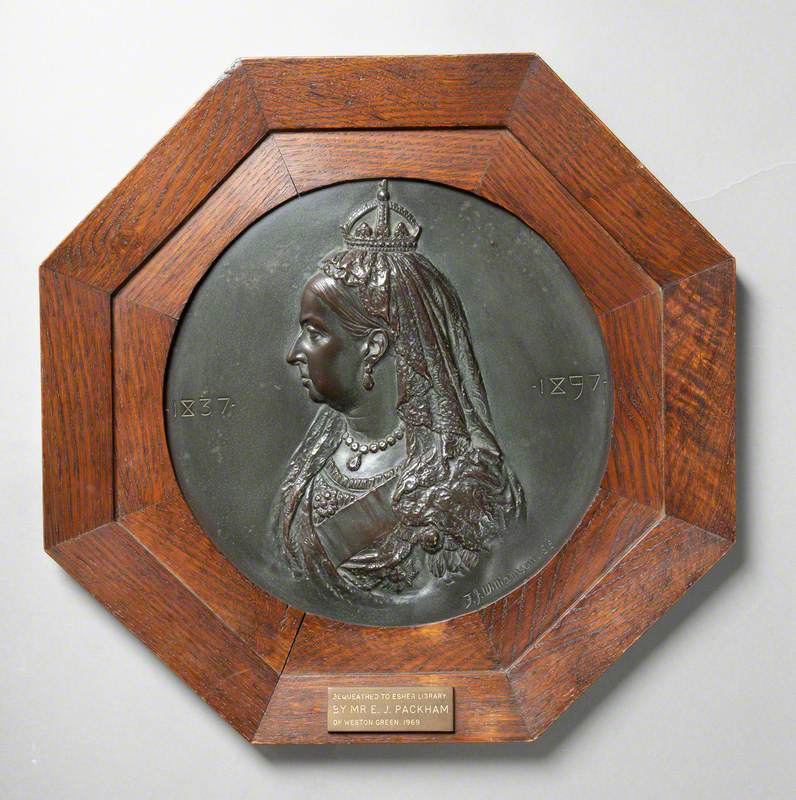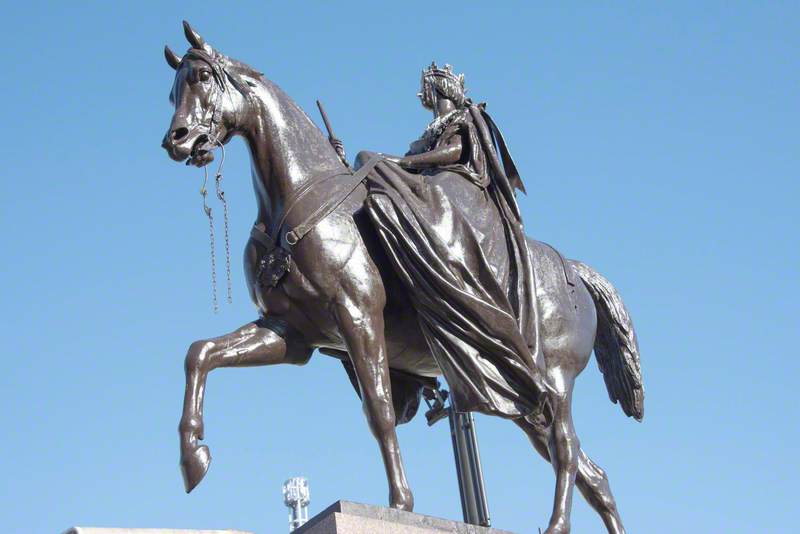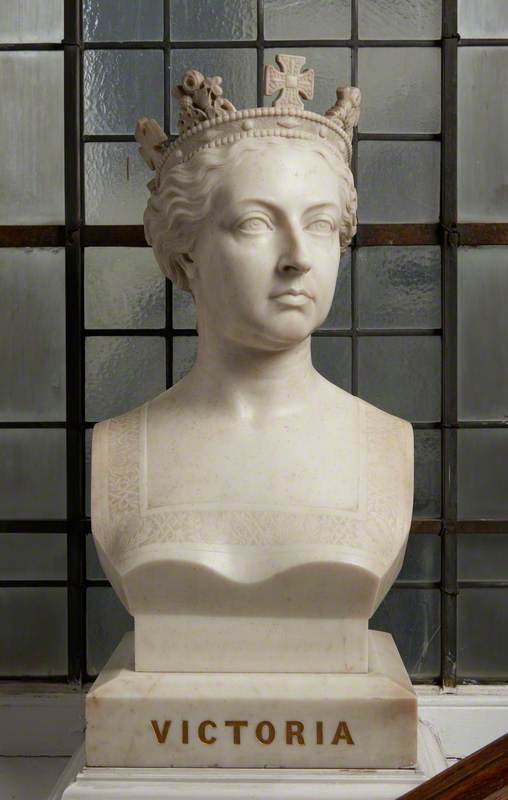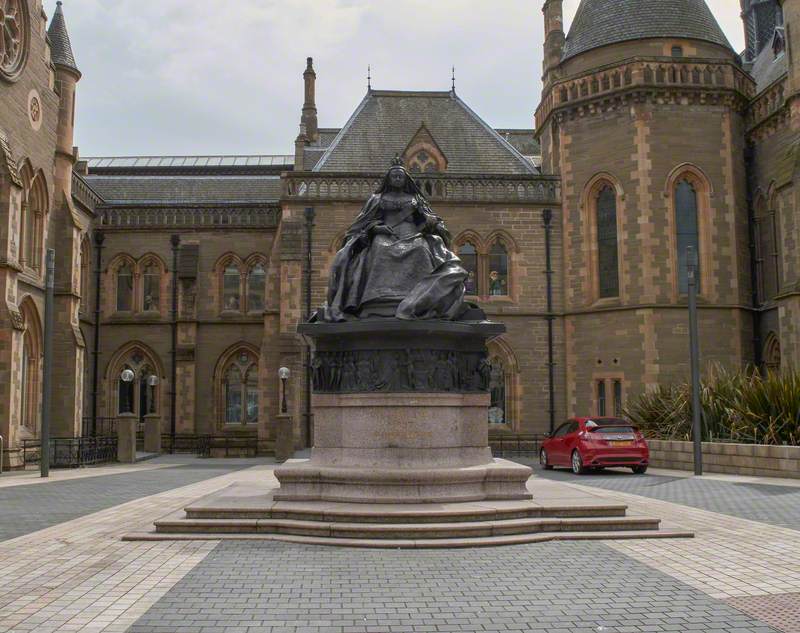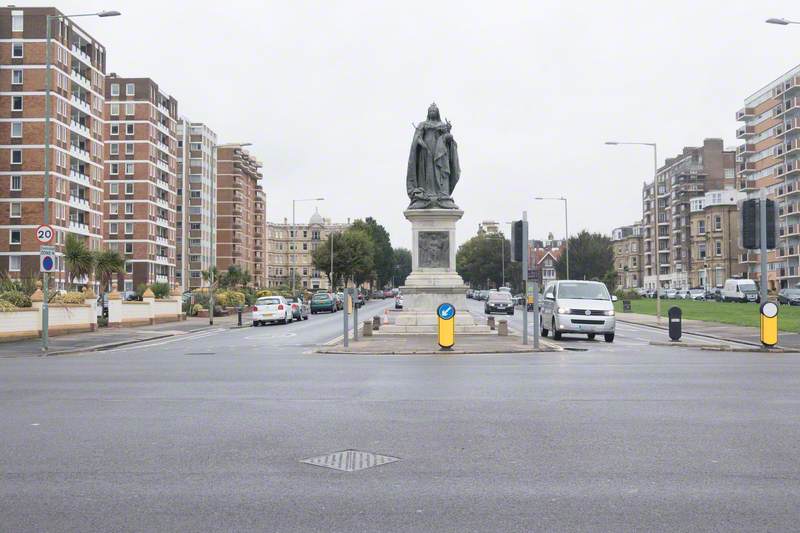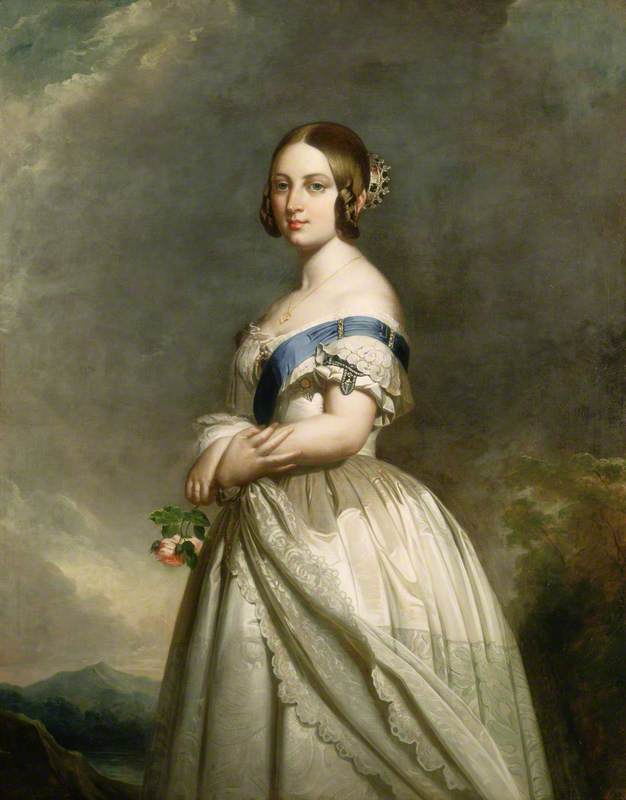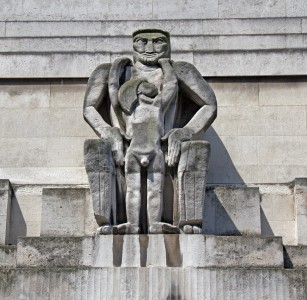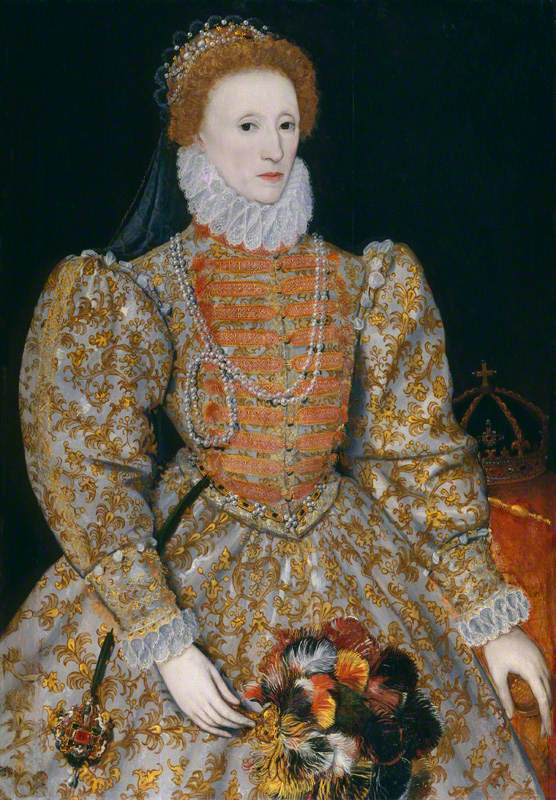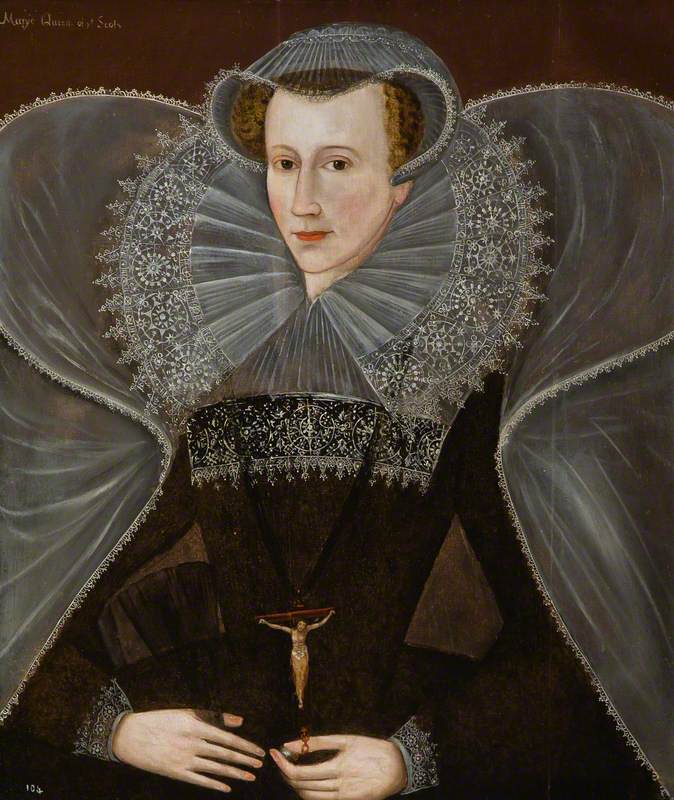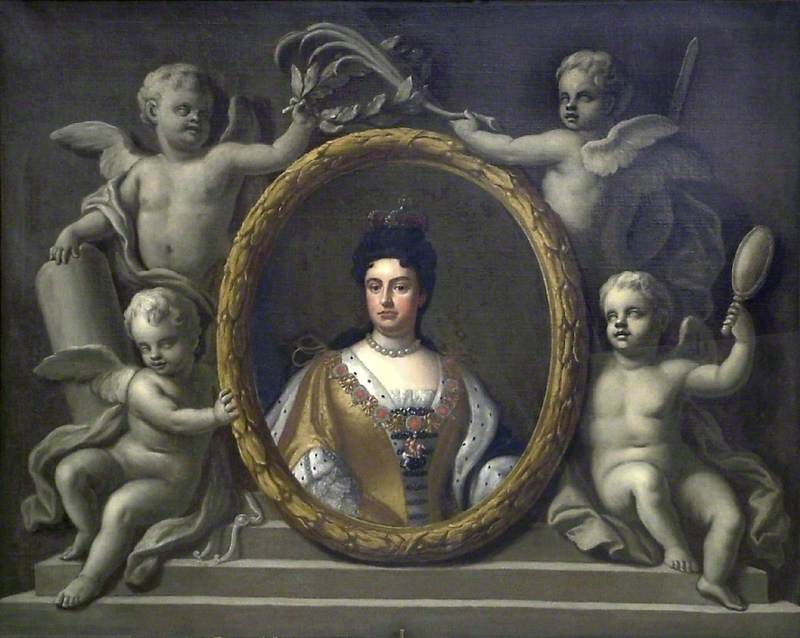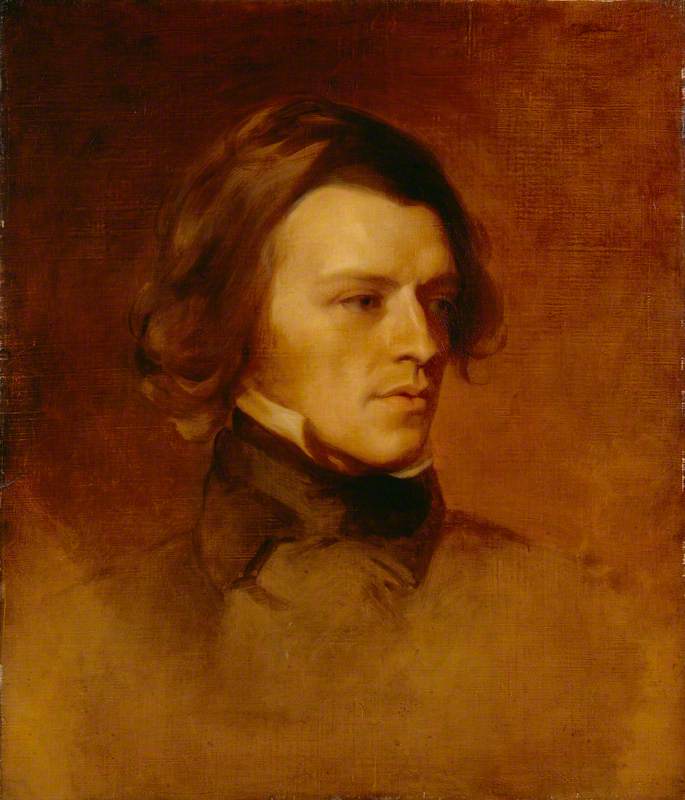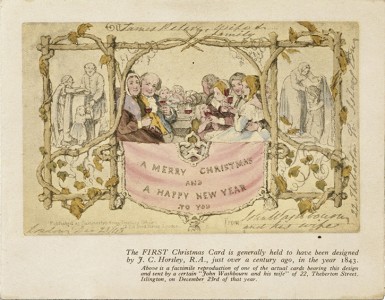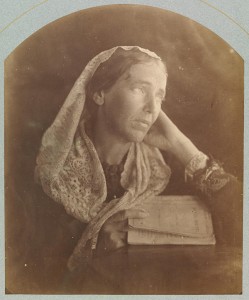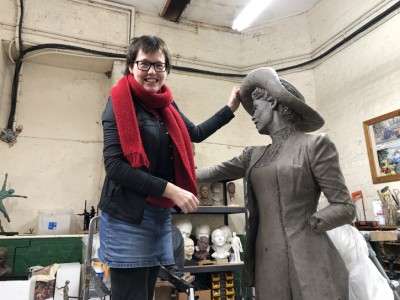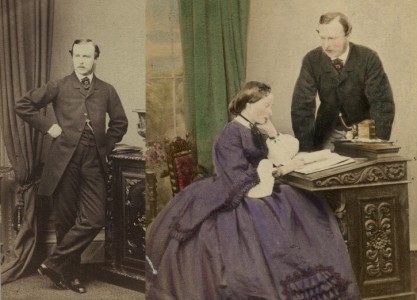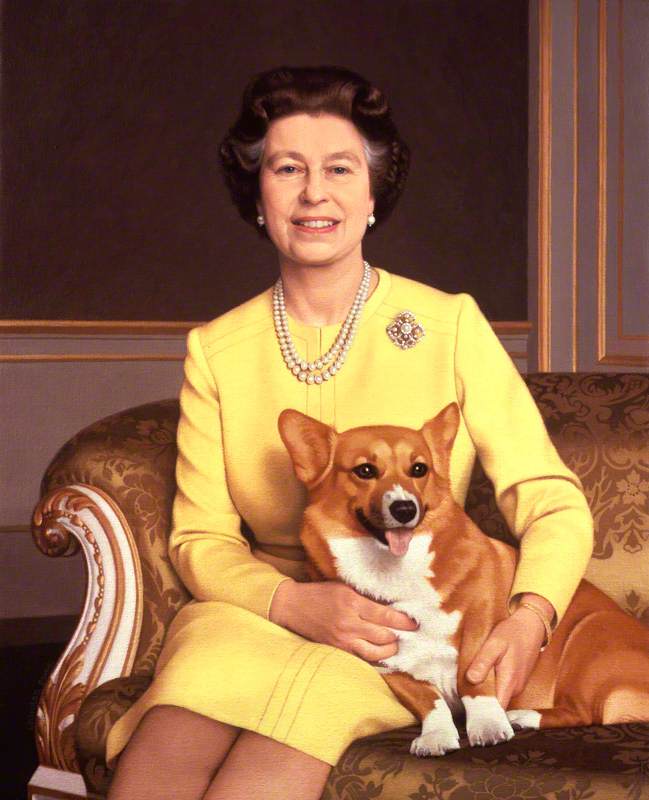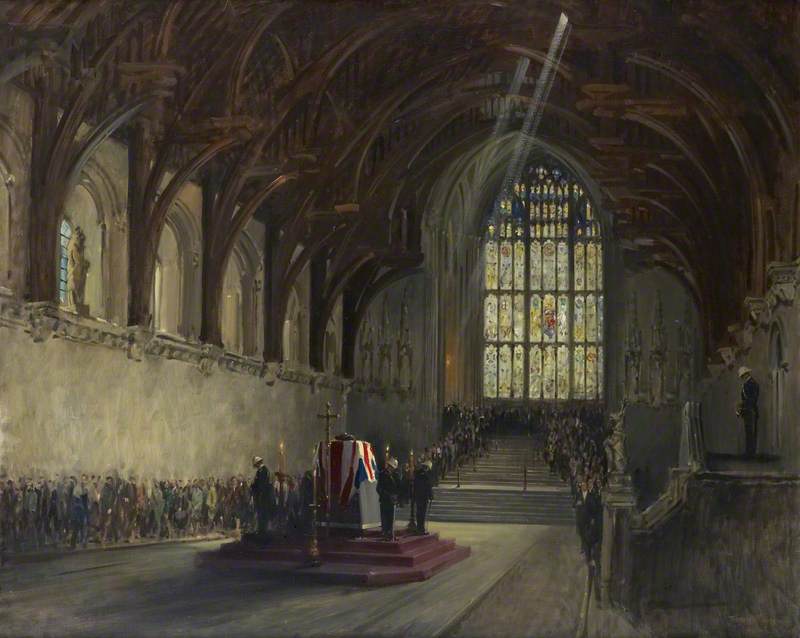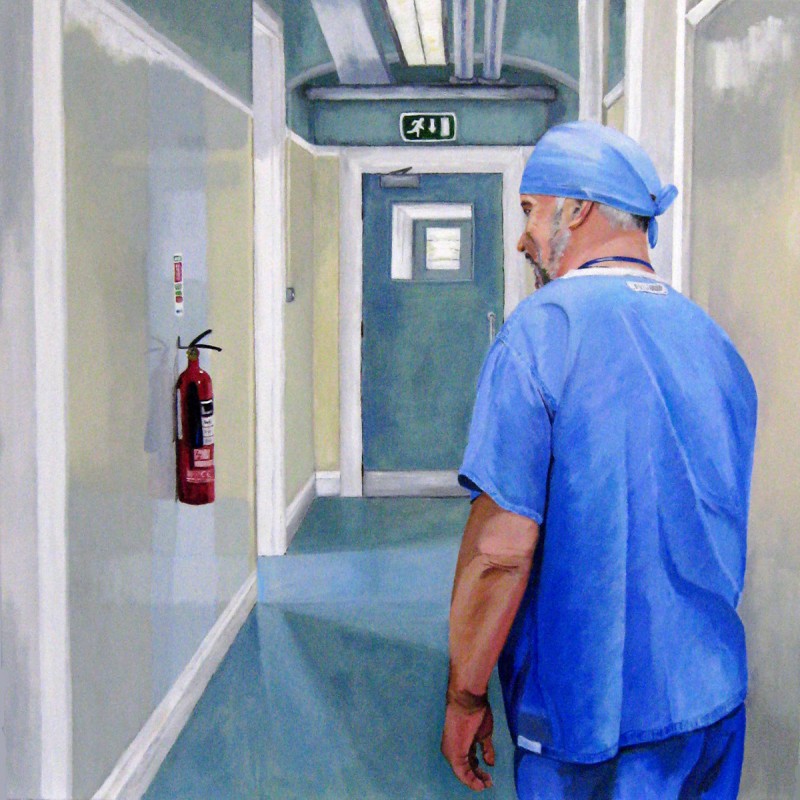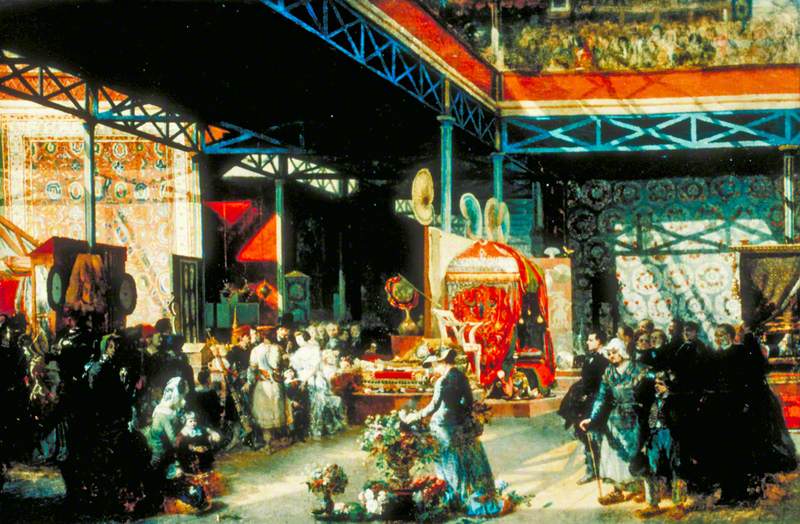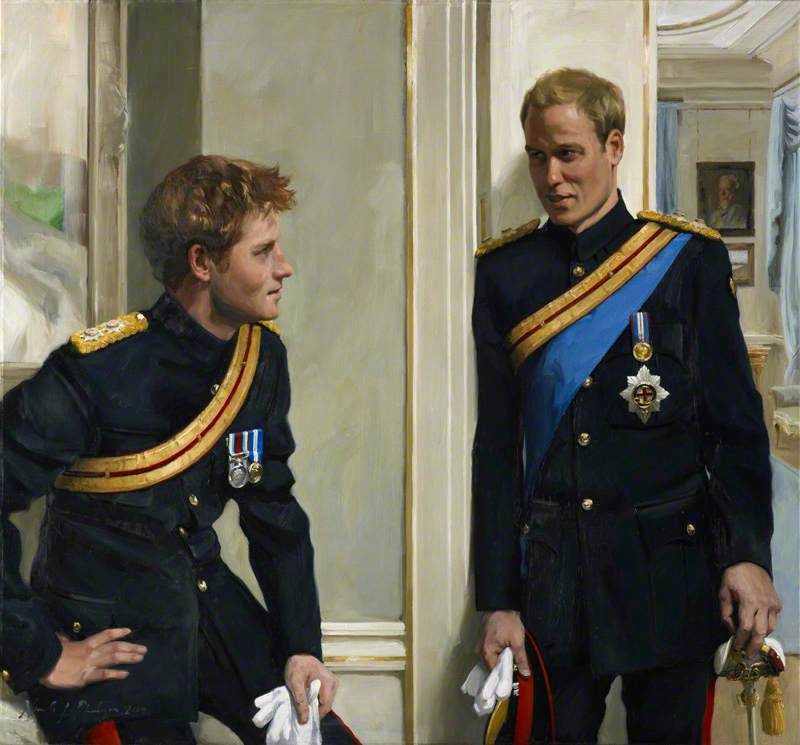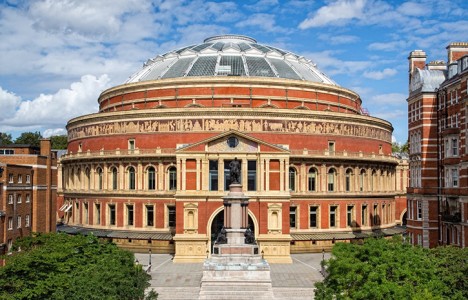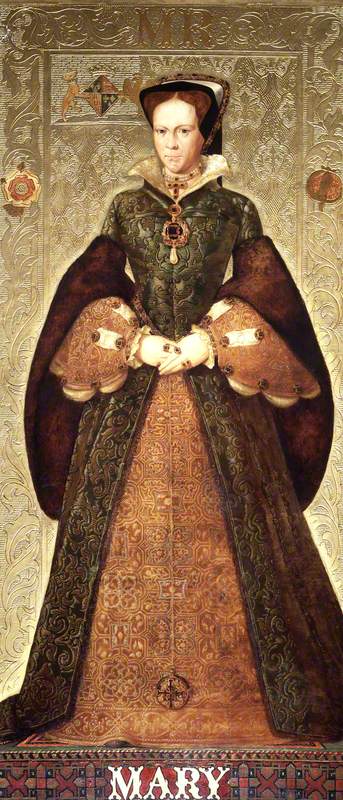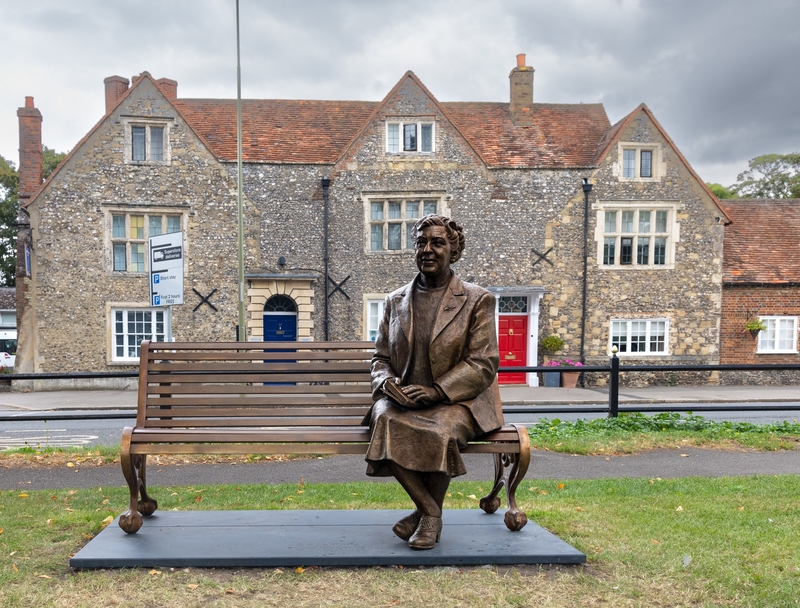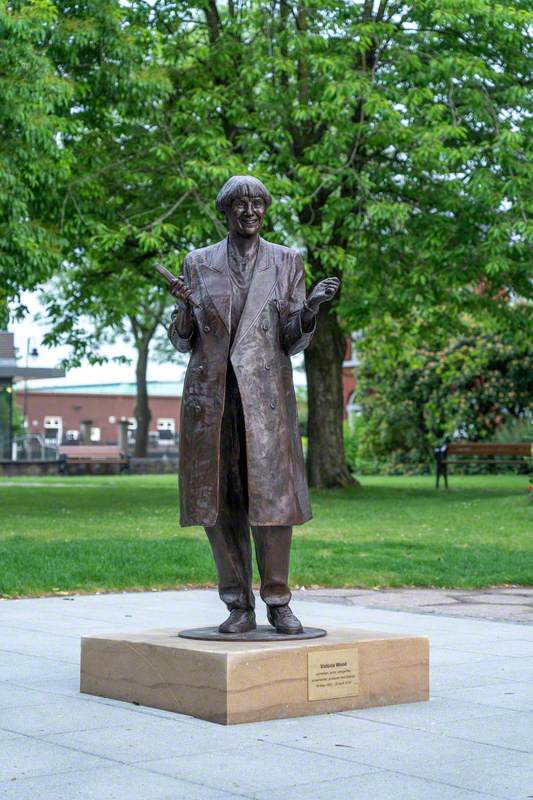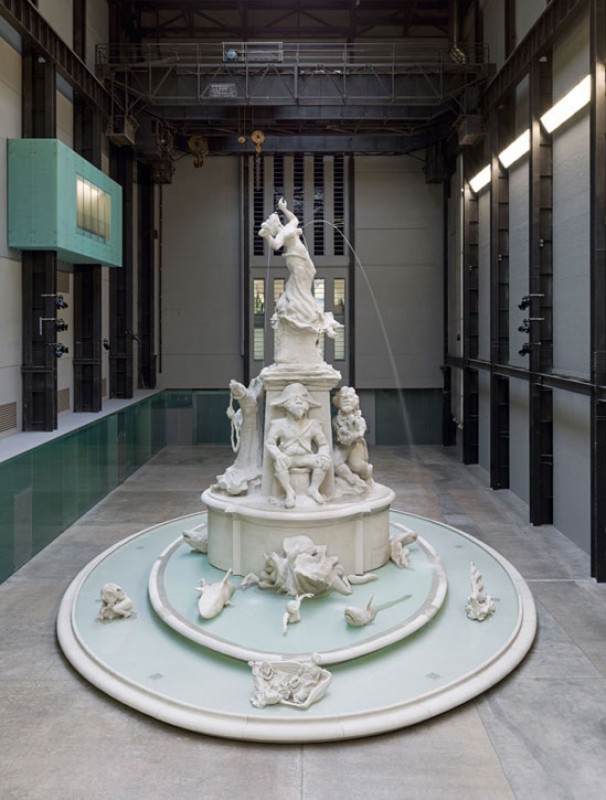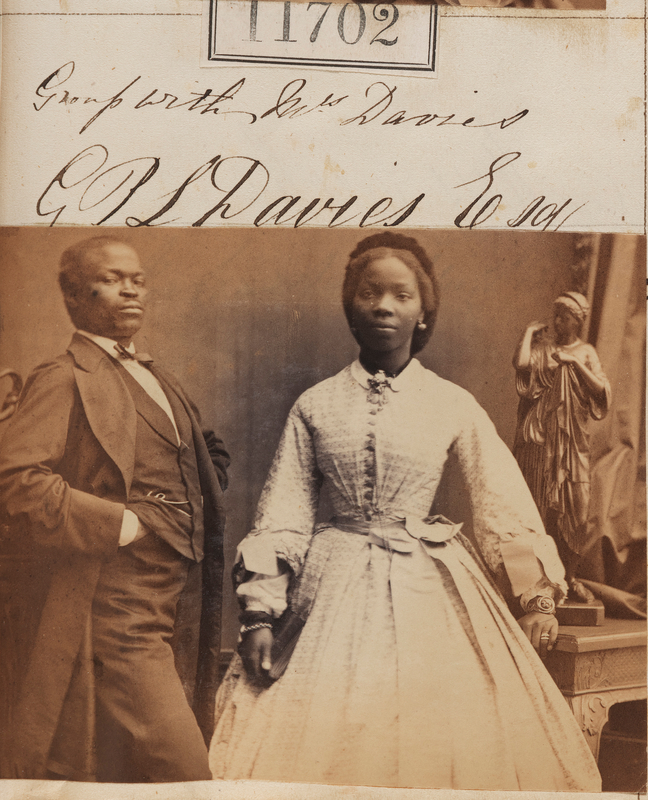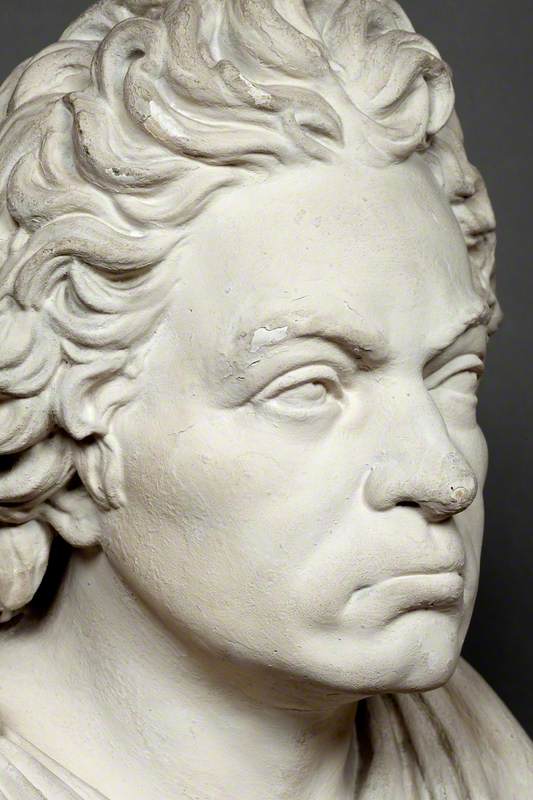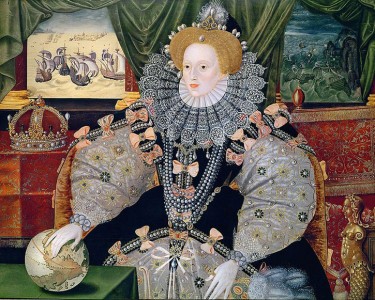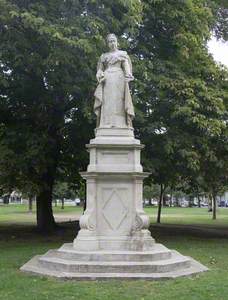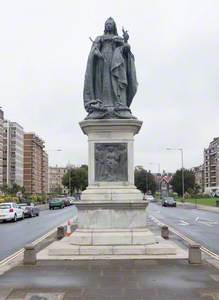What connects a type of sponge cake, a flowering Prunus tree, an African lake, a state in Australia, a mountain in New Zealand, a city district in Ghana, an underground line in London and train stations in London and Manchester?
These are only a few of the many things named after Queen Victoria, a woman that had an enormous political and cultural impact worldwide. Victoria's image, just like her name, was ubiquitous in Britain and its empire. The Queen's likeness was on everyday items such as coins and, for the first time ever, on postage stamps: in 1840 Victoria's profile was reproduced on the famous Penny Black, the world's first adhesive stamp.
Queen Victoria (1819–1901), Reigned 1837–1901
1840
Franz Xaver Winterhalter (1805–1873) 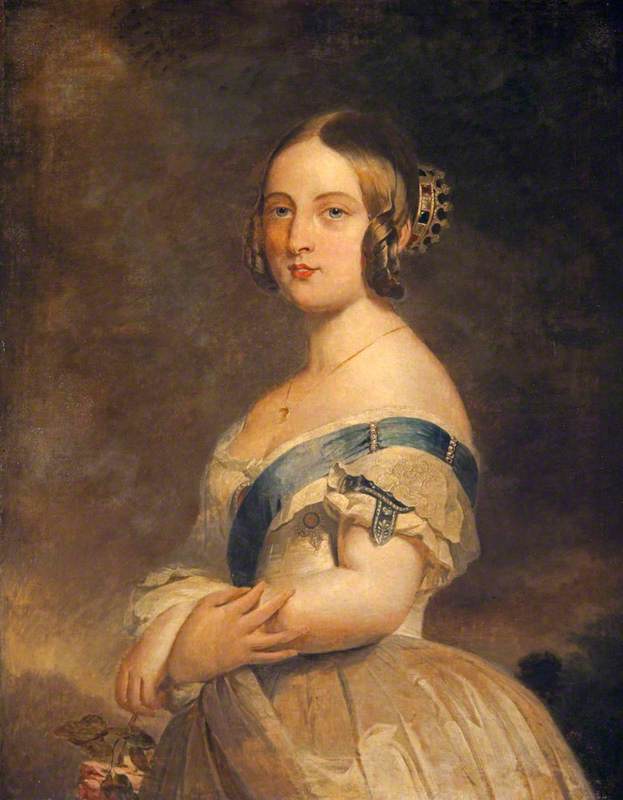
From humble coins and stamps to magnificent statuary – Queen Victoria was equally represented in public sculpture, portrayed in many busts, showing only her head and shoulders, as well as in an array of full-size statues, from memorials to fountains.
Queen Victoria
(copy after an original of 1899 by Heinrich von Angeli) 1900
Bertha Müller (1848–1925) 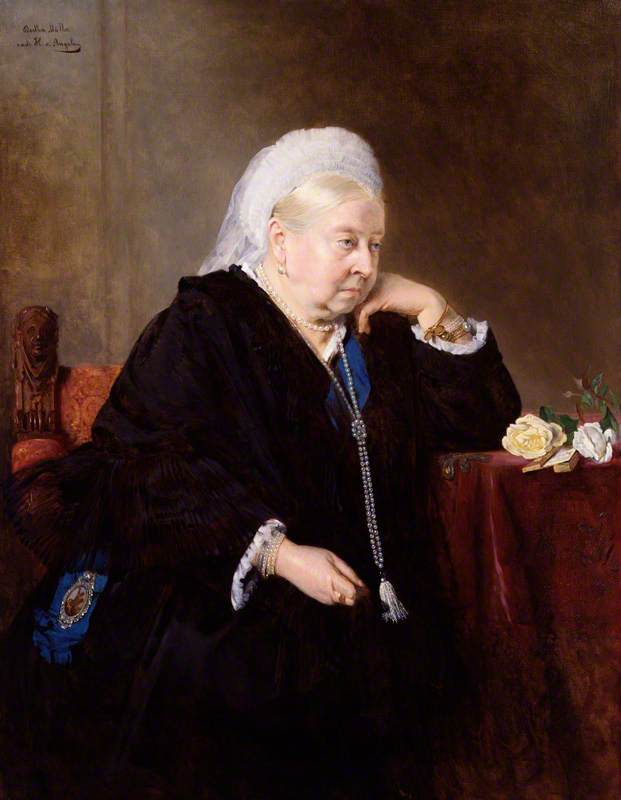
Victoria, who was crowned Queen aged only 19 in 1838 (she was born 200 years ago, on 24th May 1819), was a popular monarch. When John Mayall made her photograph available for purchase in 1860, over 60,000 orders were placed in a matter of days. The interest for Victoria's image only increased as technical developments made photographic reproduction cheaper. In the 1880s Victoria's photograph was the most reproduced in the United Kingdom, followed by the actress Ellen Terry.
Public statues contributed to Victoria's popularity, manifesting the Queen's presence in the country's parks, squares, administrative buildings and offices. As the majority of people would never see the Queen in real life, the busts and statues of Victoria represented the people's only encounter with the physicality of the sovereign.
Art UK's sculpture project is now documenting many of these statues, some of which have been photographed and published for the first time, and it demonstrates the extent, variety and importance of the sculpted image of Queen Victoria in Britain. In honour of Queen Victoria's bicentenary, let us take a look at the first sculptures of Victoria published on the Art UK website.
Queen Victoria by Carlo Marochetti (George Square, Glasgow)
In 1849 the young Queen visited Glasgow. After her visit, the city held a public subscription to erect this imposing monument: the first-ever public equestrian sculpture of a woman in the United Kingdom.
Scottish newspapers reported that large crowds assisted in awe to its unveiling in 1854. The sculptor of this statue, Carlo Marochetti, had previously executed a much-praised equestrian statue of King Emanuele Filiberto in Turin (1838). Marochetti, an Italian trained in Paris, was one of the favourite artists of Queen Victoria and her husband Prince Albert; the royal couple commissioned Marochetti several portraits.
If Marochetti's statue of Emanuele Filiberto was dynamic, the horse in a galloping pose and the King riding it with the assertive pose of a warrior, his sword unsheathed, in the Glasgow statue Marochetti followed the convention, as established by the British sculptor Francis Legatt Chantrey, of representing the young Queen Victoria in a highly idealised form. In the Glasgow monument the Queen rides gracefully side-saddle, wearing a low-cut dress with a long, classically folding skirt, the individual features of her face smoothed out to classical perfection, her demeanour full of decorum and calm, regal poise.
Queen Victoria by William Brodie (The Company of Merchants of the City of Edinburgh)
The idealised representation of Victoria continued throughout the mid-nineteenth century. In 1865 and 1866 a 46-year old Queen Victoria sat for the sculptor Alexander Brodie, who produced a statue for Aberdeen City Chambers, and started a bust now at the National Galleries Scotland. After Alexander Brodie's death in 1867, his brother William finished the bust now at the National Galleries and produced this one for the Company of Merchants in Edinburgh.
This is very similar to the bust designed by his brother but not exactly the same. In Alexander Brodie's bust, the Queen continues to be represented in a highly idealised form: her eyes have no pupils, and her curls have the same geometric perfection of neoclassic statuary. Her lips are severe, her nose perfectly straight and the marble polished and almost as translucent as ice.
William brings some humanity and warmth to Alexander's icy Queen: the curls have a more natural shape, Victoria's nose has an unmistakeable curve, the corners of her lips point out in a barely perceptible smile. A crucial difference are her eyes with fully visible pupils. Victoria is now looking out and engaging with the viewer. Other important details are Victoria's dress and crown: in Alexander Brodie's bust the Scottish thistle is included together with the English rose and the Irish clover in the Queen's dress, whereas in William Brodie's bust the theme of the thistle/rose/clover is repeated in the crown (which is plain in Alexander's work), but the thistle is the only decoration present in the Queen's dress. The Queen is not only more human but also more unmistakeably Scottish.
Victoria had a long reign, from 1837 to her death 1901, and celebrated her Golden Jubilee in 1887 and her Diamond Jubilee in 1897. The 1897 Jubilee inspired an enormous output of public sculpture, often part of larger commemorative projects.
Queen Victoria by Harry Bates (Albert Square, Dundee)
This public sculpture for Dundee was funded, like the one in Glasgow, by public subscription organised by the Corporation of Dundee, and was to be part of a larger commemorative open plan that also included an art gallery, a museum, a public library and a hospice (now Royal Victoria Hospital). The commission for the statue, which cost £2,500, was made only in 1897, too late to be ready for the Diamond Jubilee celebrations of the same year, even if a full-size plaster cast was sent by the sculptor, Englishman Harry Bates, as a temporary substitute.
The monument was completed and unveiled by Victoria's son Prince Arthur, the Duke of Connaught, two years later, in 1899, in front of a large audience. Bates had recently died and could not see the inauguration of his work. This artist, a student of Auguste Rodin, was a major figure in the New Sculpture movement, which aimed to achieve a more naturalistic modelling in sculpture. Indeed, this statue, which shows Victoria sitting down, wearing the full regalia of her Jubilee, gives much greater attention to her physical reality, for instance, not attempting to slim down her full figure.
This sculpture was the closest that most people of Dundee would ever be to the Queen as she had visited the city only twice in her long reign, in 1844 and 1879. Her 1844 visit is commemorated in one of the bronze reliefs in the red granite pedestal of the sculpture, the others representing Victoria's marriage, her decoration of Crimean veterans and her charitable acts towards the poor. The reliefs, as well as the statue of the Queen herself, show an approachable, sympathetic and charitable monarch, very different to the classical, cold beauty of the previous sculptures.
Two statues of Queen Victoria in the neighbouring towns of Brighton and Hove represent a very interesting comparison because they show the development of two different images of Queen Victoria that developed in the nineteenth century: a naturalistic, human Queen (as also exemplified by Bates' monument in Dundee) versus the symbolic monarch, an allegory of Britain and its Empire.
Queen Victoria by Carlo Nicoli (Victoria Gardens, Brighton)
Queen Victoria (1819–1901)
1897
Carlo Nicoli (1843–1915) and The Sculptured Marble Company 
Carlo Nicoli was an Italian sculptor from Carrara, the town famous for its perfectly white and durable marble. Nicoli opened a sculpture workshop there, which produced many public monuments for the international market, working as far afield from Italy as the United States and Brazil.
Even if Victoria's statue in Brighton shows the Queen in official capacity at the opening of Parliament, Nicoli represents Victoria in a very realistic way, as an actual human being. He did not conceal her full figure and carved the details of her dress as if made by real fabric and not marble. We see each fold of the cloth and each detail of the dress, including its small buttons and the two cameos of Victoria's late husband, Prince Albert, that the Queen wore on her ceremonial sash. Like in William Brodie's bust, Nicoli sculpted Victoria's eyes with large, expressionistic pupils, her benevolent gaze cast down on the public garden in Brighton that still carries her name.
Queen Victoria by Thomas Brock (Grand Avenue, Hove)
Thomas Brock, the sculptor of Queen Victoria's memorial in front of London's Buckingham Palace, designed this monument in 1897. It was, however, unveiled only in February 1901, shortly after the Queen's death.
Brock represented the Queen in full regalia, including the diamond crown that Victoria had commissioned, a smaller size designed specifically to be worn on top of her mourning veil. Brock even sculpted the diamond and emerald parure (an older gift from the late Albert) that Victoria wore for her Jubilee celebrations. But these naturalistic details are dwarfed by the symbols of Victoria's political power – the sceptre and the orb – that the Queen carries high in her hands. Victoria here is not gazing benignly down at her subjects but looking out majestically at the sea.
The ceremonial, symbolic and political nature of this statue is reinforced by the inscription on the pedestal: Britanniae Regina (Queen of Britain), Fidei Defensor (defender of the Anglican faith), Indiae Imperatrix (Empress of India), Victoria Dei Gratias (Victorious by the Grace of God). The pedestal is also embellished by four bronze panels representing the highest achievements of her reign: science and art, commerce, empire and education.
As time passed, Queen Victoria's smaller busts, which focused principally on her face, became more realistic. The sculptors carved with great skill the face of the older queen, creating some of the most sympathetic representations of an ageing woman.
Queen Victoria by Edward Onslow Ford (St Bartholomew's Hospital Museum and Archive, London)
Queen Victoria (1819–1901)
1898
Edward Onslow Ford (1852–1901) 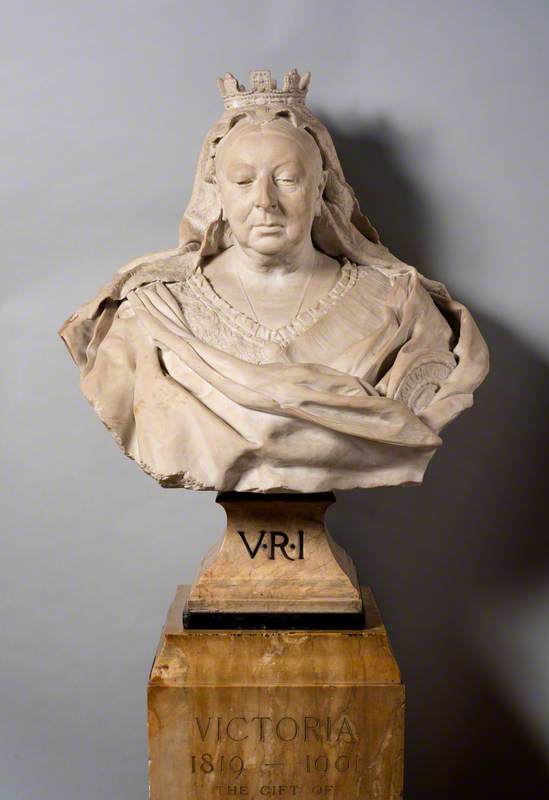
The last major sculpture that Onslow Ford completed before his death (he died the same year of Victoria, 1901) was Victoria's monument in Manchester, another work commissioned for the Queen's 1897 Diamond Jubilee.
Onslow Ford utilised a study for the larger-scale statue, for a bust of the Queen, which he then reproduced many times in marble and bronze, creating slightly different variations. Even if Ford, like Nicoli and Brock, represented the Queen in full regalia, the expressive, lined and aged face of Victoria, now eighty years old, is the principal focus of this portrait. Her gaze is, again, important to set the atmosphere of the sculpture: in this work, Victoria is pensively looking down, as if focusing on her inner life.
When a version of this portrait was exhibited at the Royal Academy in 1898 the reviews were overwhelmingly positive, and the bust was described as full of dignity and touching. The Queen herself approved of this portrait. She was reported to say that Onslow Ford had been the only artist who really understood her face and ordered several versions of this bust, both in marble and bronze.
One may wonder: why are there so many statues of Queen Victoria compared to other long-reigning monarchs such as, for instance, George III (reigned 1760–1820)?
Perhaps one of the reasons is that in the course of the nineteenth century the role of the British monarchy was changing and a programme of democratisation was underway. The voting franchise was extended, the powers of the aristocracy curtailed, and the remit of the unelected House of Lords was limited in favour of the democratically elected House of Commons. The Queen's powers were also revised to, principally, an advisory capacity.
As Victoria's role became less political, her symbolic role and cultural influence increased. The Queen placed a strong emphasis on morality and family values, in strong contrast to the scandals associated with the previous kings. Victoria became seen as a benign influence, which supervised and guaranteed the democratic process of the United Kingdom, rather than a ruler associated with powerful politicians. Although Queen Victoria had her own political sympathies and inclinations – she was, for instance, much fonder of Conservative Benjamin Disraeli than Liberal William Gladstone – she was represented as an impartial figure operating beyond political rivalries and the political spectrum, and thus she could gain the admiration and respect of all strata of the population, whatever their political creed.
Barbara Pezzini, art historian and South East of England Coordinator for Art UK's sculpture project
